Abstract
Tryptophanase from Bacillus alvei also possesses serine dehydratase activity. A comparison of this enzyme with l-serine dehydratase [l-serine hydro-lyase (deaminating), EC 4.2.1.13] in toluene-treated whole cell preparations of the organism was undertaken. Tryptophanase is a constitutive enzyme in B. alvei. The dehydratase undergoes a repression-derepression-repression sequence as the l-serine level in the growth medium is increased from 0 to 0.1 m. Tryptophanase activity is decreased in organisms grown in medium containing glucose. Both enzymes are repressed in organisms grown in glycerol-containing medium. l-Serine dehydratase has a pH optimum of 7.5 in potassium phosphate buffer; tryptophanase functions optimally in this buffer at pH 8.2. Both enzymes lose activity in the presence of tris(hydroxymethyl)aminomethane buffer. Either K+ or NH4+ is required for full tryptophanase activity, but Na+ is markedly inhibitory. These three cations are stimulatory to l-serine dehydratase activity. Both enzymes are subject to apparent substrate inhibition at high concentrations of their respective amino acids, but the inhibition of tryptophanase activity can be completely overcome by the removal of indole as it is formed. The dehydratase does not catalyze cleavage of d-serine, l-threonine, or α-substituted serine analogues at the concentrations tested. However, activity of the enzyme in cleaving l-serine is competitively inhibited by d-serine, indicating that the d-isomer can occupy an active site on the enzyme. The enzyme catalyzes cleavage of some β-substituted serine analogues.
Full text
PDF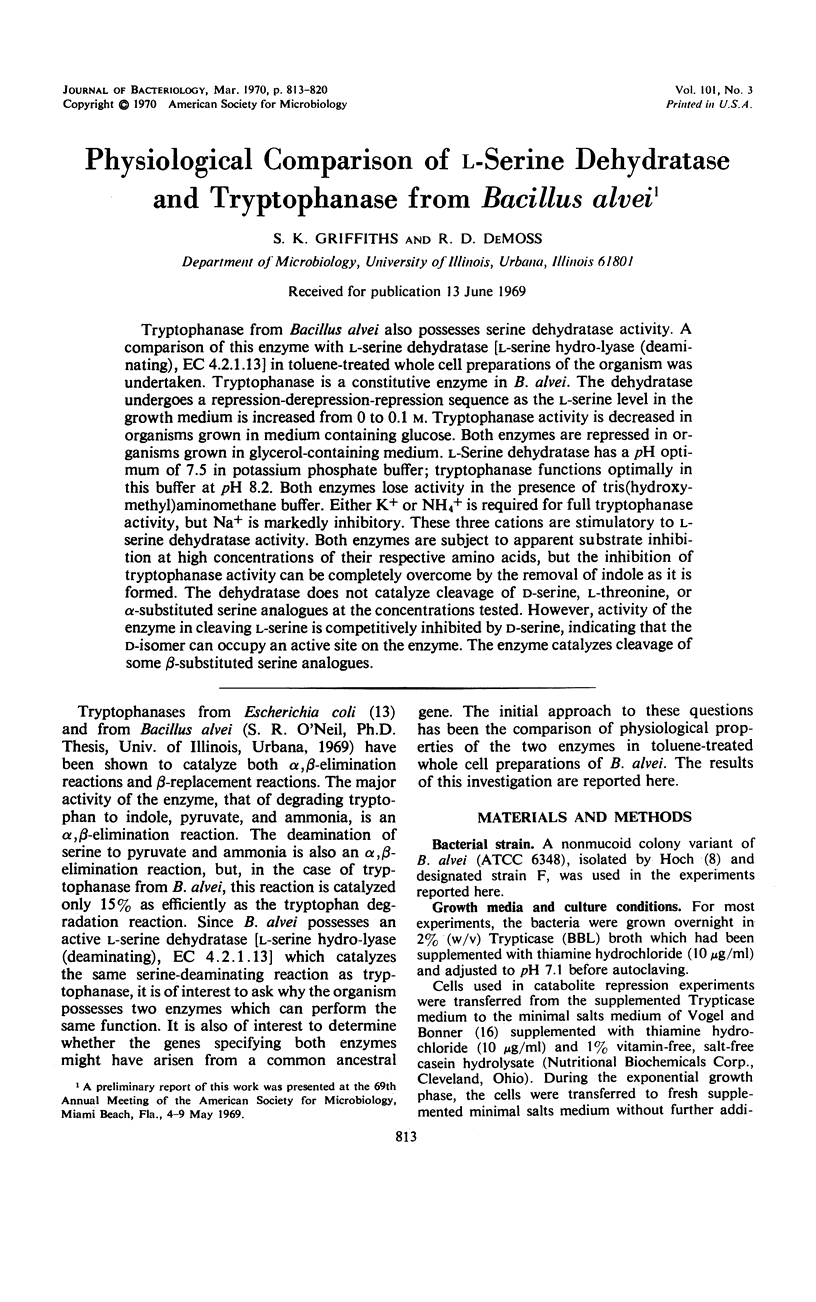
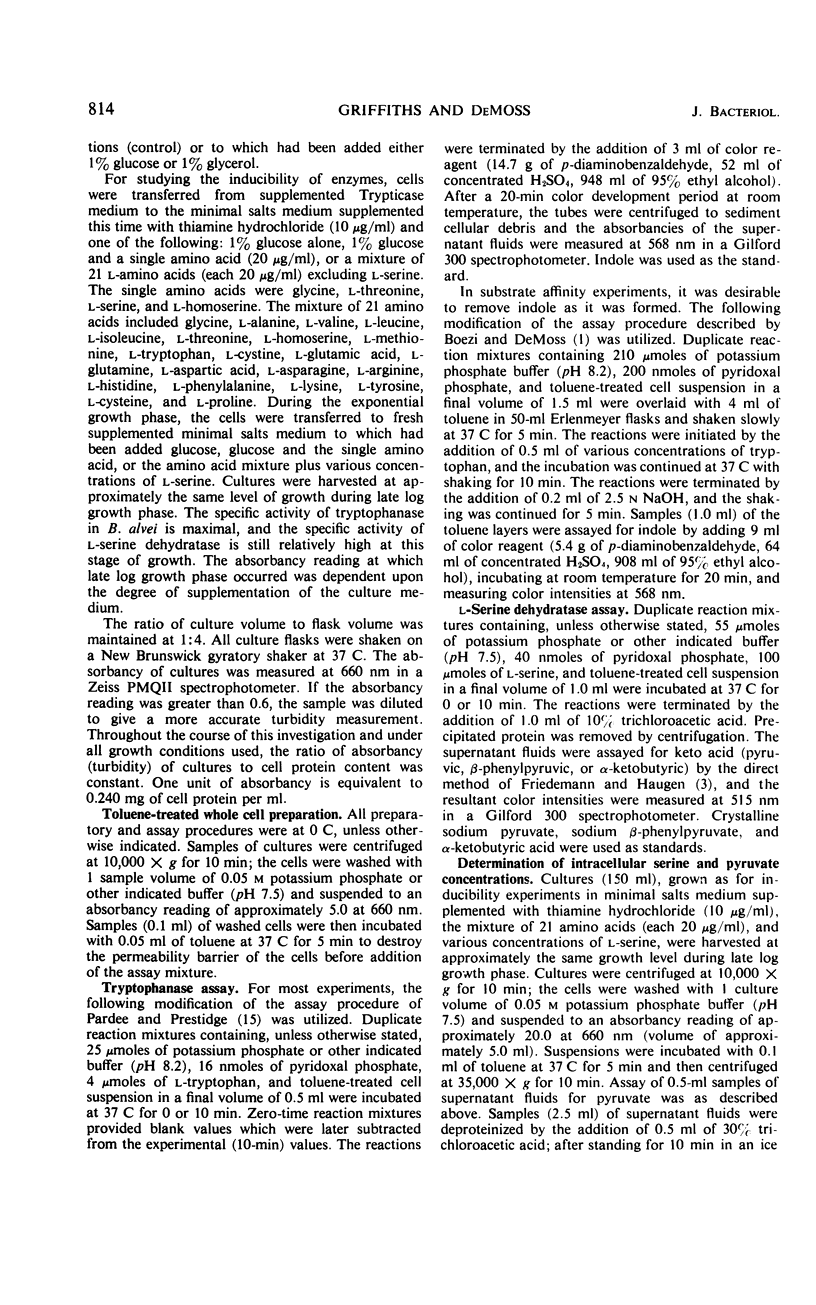
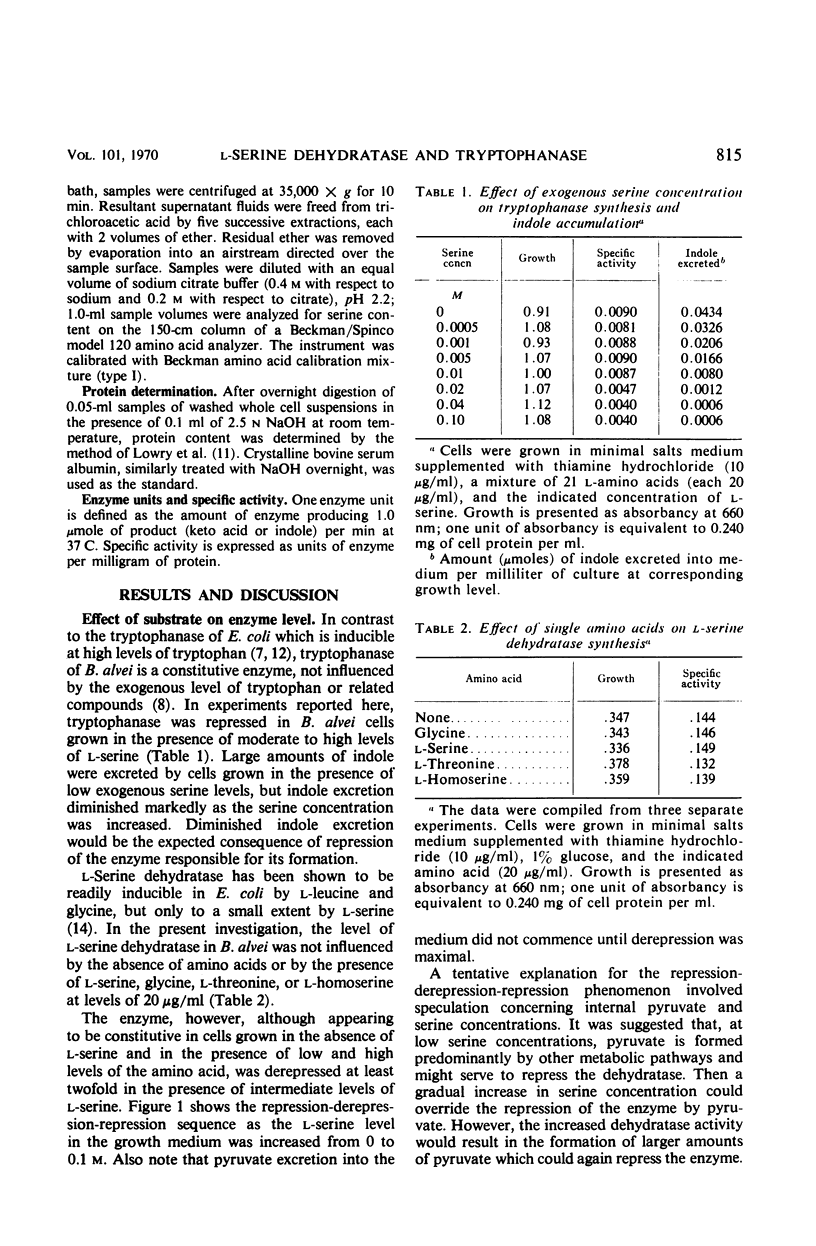
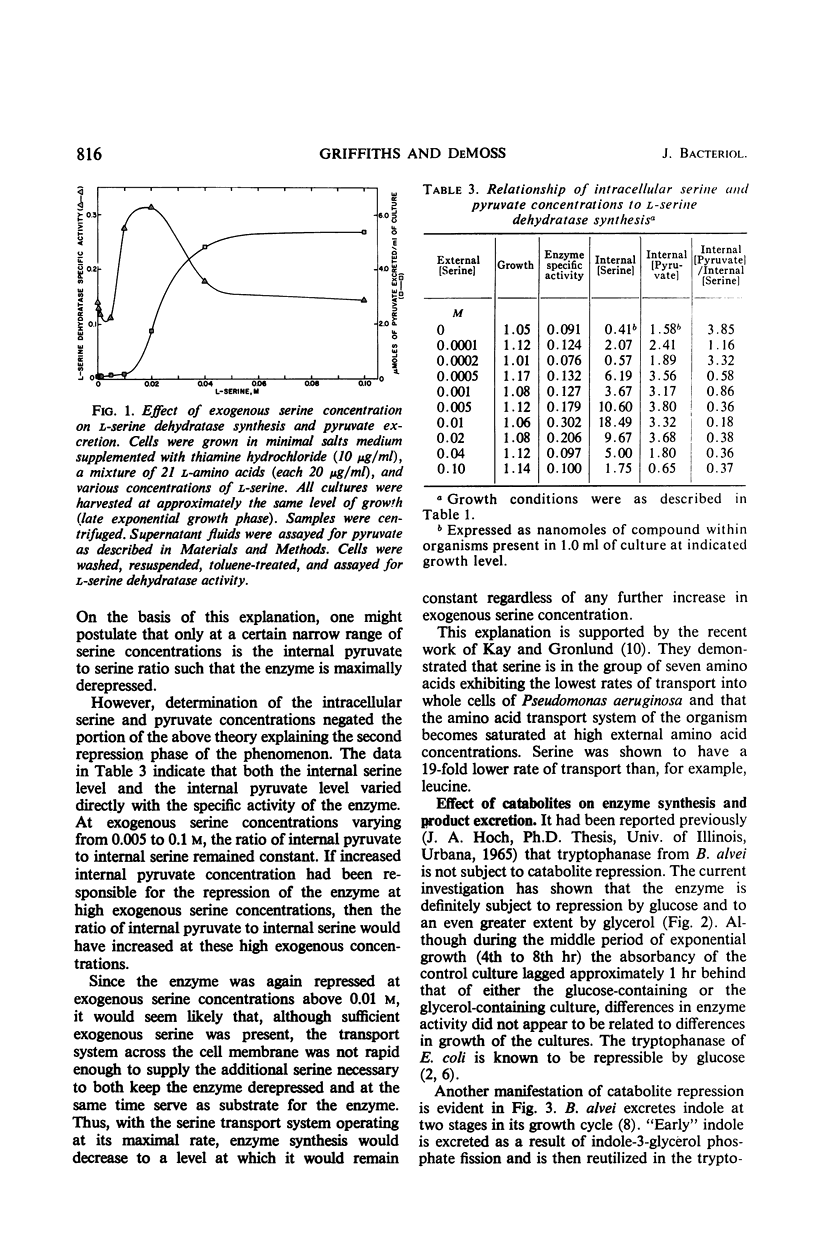
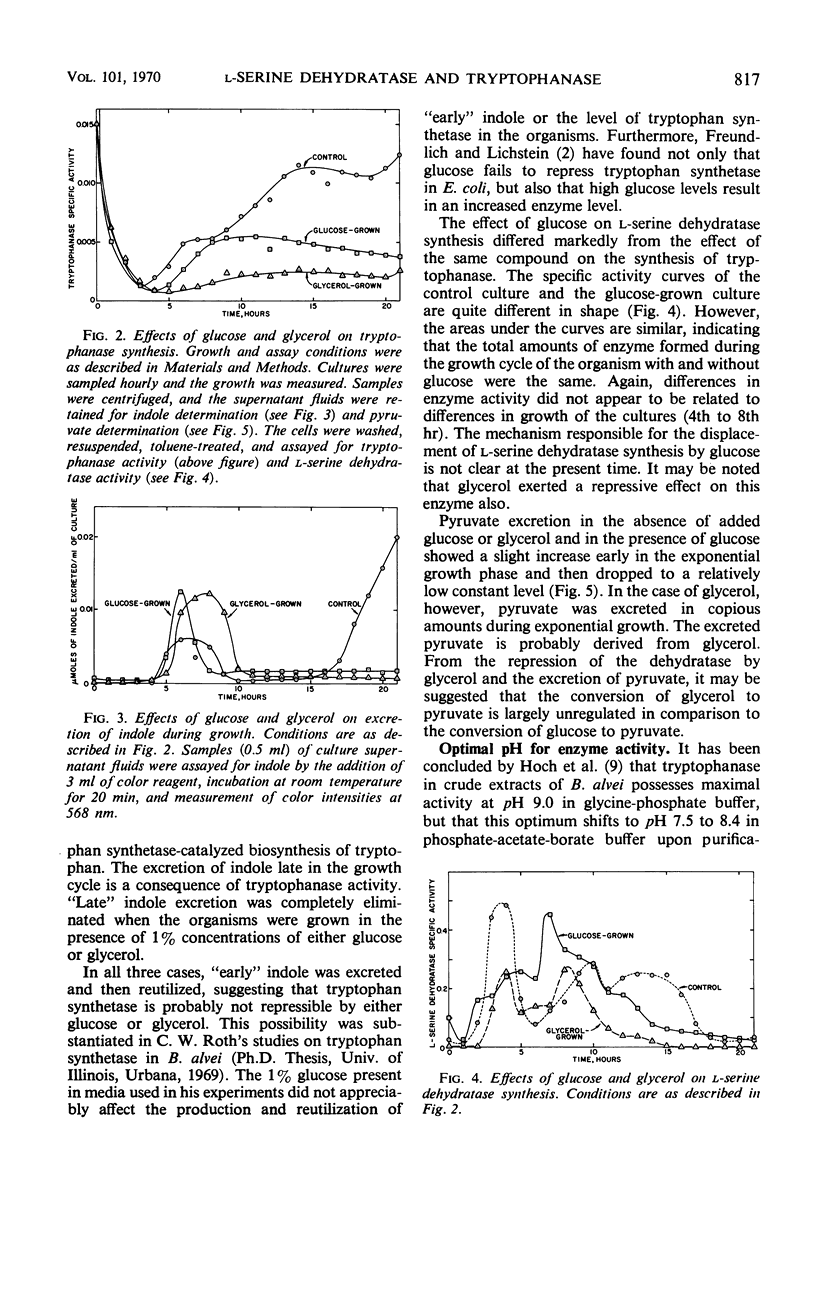
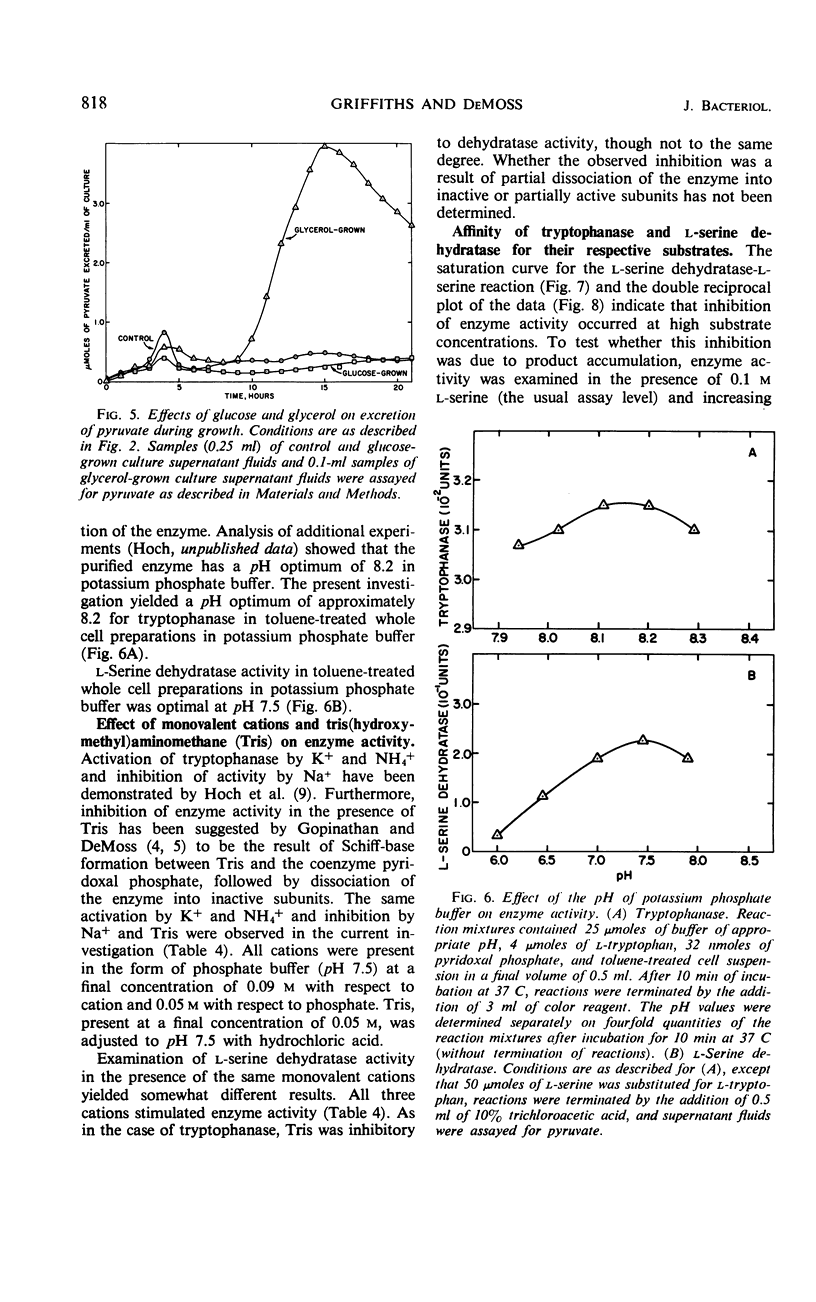
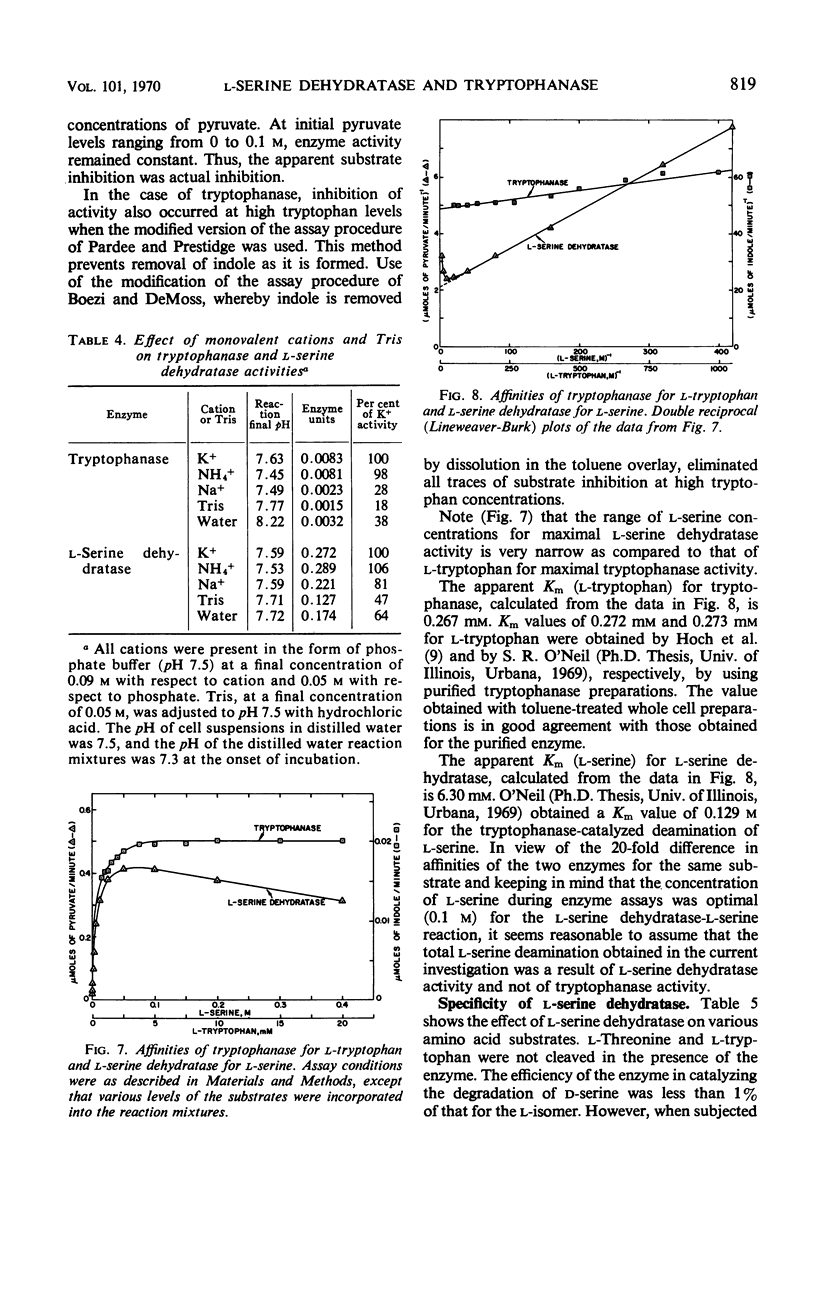
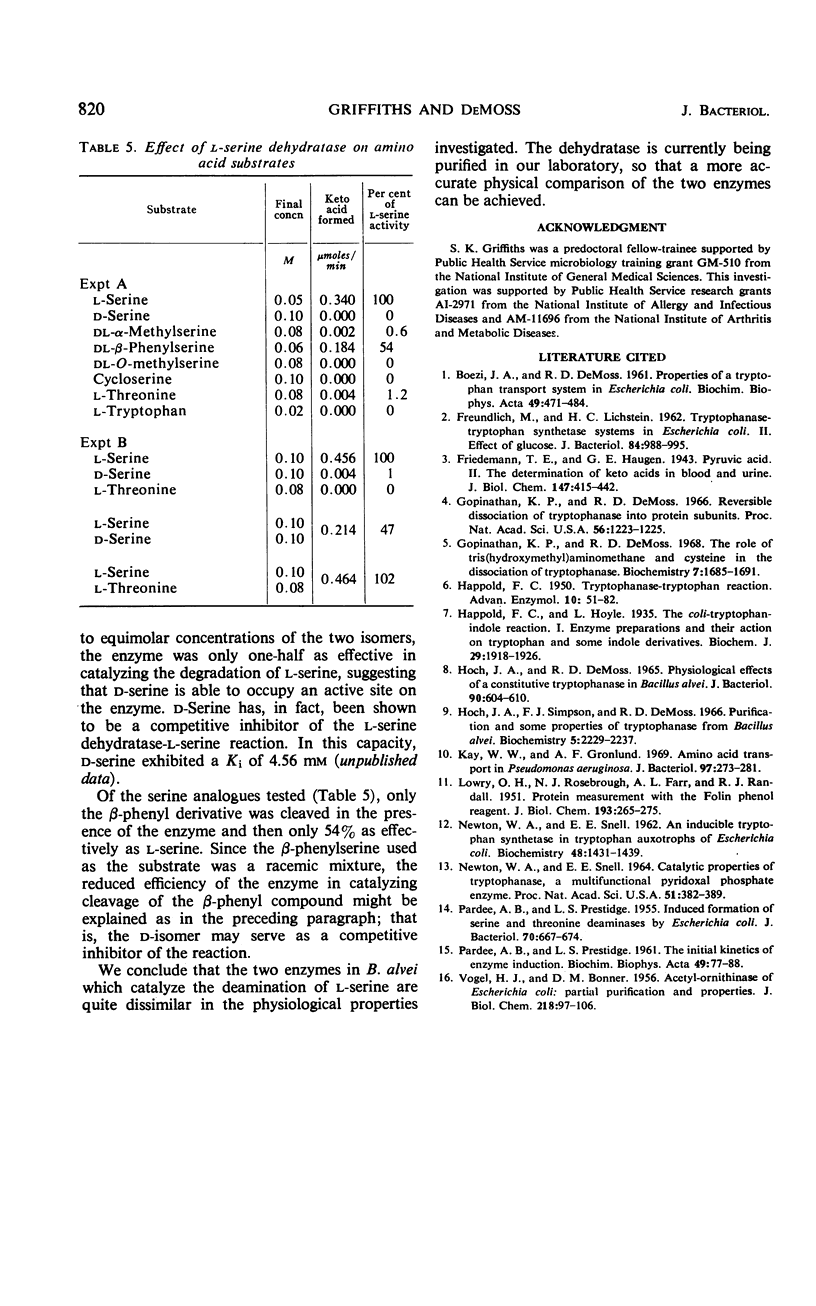
Selected References
These references are in PubMed. This may not be the complete list of references from this article.
- FREUNDLICH M., LICHSTEIN H. C. Tryptophanase-tryptophan synthetase systems in Escherichia coli. II. Effect of glucose. J Bacteriol. 1962 Nov;84:988–995. doi: 10.1128/jb.84.5.988-995.1962. [DOI] [PMC free article] [PubMed] [Google Scholar]
- Gopinathan K. P., DeMoss R. D. Reversible dissociation of tryptophanase into protein subunits. Proc Natl Acad Sci U S A. 1966 Oct;56(4):1223–1225. doi: 10.1073/pnas.56.4.1223. [DOI] [PMC free article] [PubMed] [Google Scholar]
- Gopinathan K. P., DeMoss R. D. The role of tris(hydroxymethyl)aminomethane and cysteine in the dissociation of tryptophanase. Biochemistry. 1968 May;7(5):1685–1691. doi: 10.1021/bi00845a010. [DOI] [PubMed] [Google Scholar]
- HAPPOLD F. C. Tryptophanase-trytophan. Adv Enzymol Relat Subj Biochem. 1950;10:51–82. [PubMed] [Google Scholar]
- Happold F. C., Hoyle L. The coli-tryptophan-indole reaction: Enzyme preparations and their action on tryptophan and some indole derivatives. Biochem J. 1935 Aug;29(8):1918–1926. doi: 10.1042/bj0291918. [DOI] [PMC free article] [PubMed] [Google Scholar]
- Hoch J. A., Demoss R. D. Physiological Effects of a Constitutive Tryptophanase in Bacillus alvei. J Bacteriol. 1965 Sep;90(3):604–610. doi: 10.1128/jb.90.3.604-610.1965. [DOI] [PMC free article] [PubMed] [Google Scholar]
- Hoch J. A., Simpson F. J., DeMoss R. D. Purification and some properties of tryptophanase from Bacillus alvei. Biochemistry. 1966 Jul;5(7):2229–2237. doi: 10.1021/bi00871a011. [DOI] [PubMed] [Google Scholar]
- Kay W. W., Gronlund A. F. Amino acid transport in Pseudomonas aeruginosa. J Bacteriol. 1969 Jan;97(1):273–281. doi: 10.1128/jb.97.1.273-281.1969. [DOI] [PMC free article] [PubMed] [Google Scholar]
- LOWRY O. H., ROSEBROUGH N. J., FARR A. L., RANDALL R. J. Protein measurement with the Folin phenol reagent. J Biol Chem. 1951 Nov;193(1):265–275. [PubMed] [Google Scholar]
- NEWTON W. A., SNELL E. E. An inducible tryptophan synthetase in tryptophan auxotrophs of Escherichia coli. Proc Natl Acad Sci U S A. 1962 Aug;48:1431–1439. doi: 10.1073/pnas.48.8.1431. [DOI] [PMC free article] [PubMed] [Google Scholar]
- NEWTON W. A., SNELL E. E. CATALYTIC PROPERTIES OF TRYPTOPHANASE, A MULTIFUNCTIONAL PYRIDOXAL PHOSPHATE ENZYME. Proc Natl Acad Sci U S A. 1964 Mar;51:382–389. doi: 10.1073/pnas.51.3.382. [DOI] [PMC free article] [PubMed] [Google Scholar]
- PARDEE A. B., PRESTIDGE L. S. Induced formation of serine and threonine deaminases by Escherichia coli. J Bacteriol. 1955 Dec;70(6):667–674. doi: 10.1128/jb.70.6.667-674.1955. [DOI] [PMC free article] [PubMed] [Google Scholar]
- PARDEE A. B., PRESTIDGE L. S. The initial kinetics of enzyme induction. Biochim Biophys Acta. 1961 Apr 29;49:77–88. doi: 10.1016/0006-3002(61)90871-x. [DOI] [PubMed] [Google Scholar]
- VOGEL H. J., BONNER D. M. Acetylornithinase of Escherichia coli: partial purification and some properties. J Biol Chem. 1956 Jan;218(1):97–106. [PubMed] [Google Scholar]


